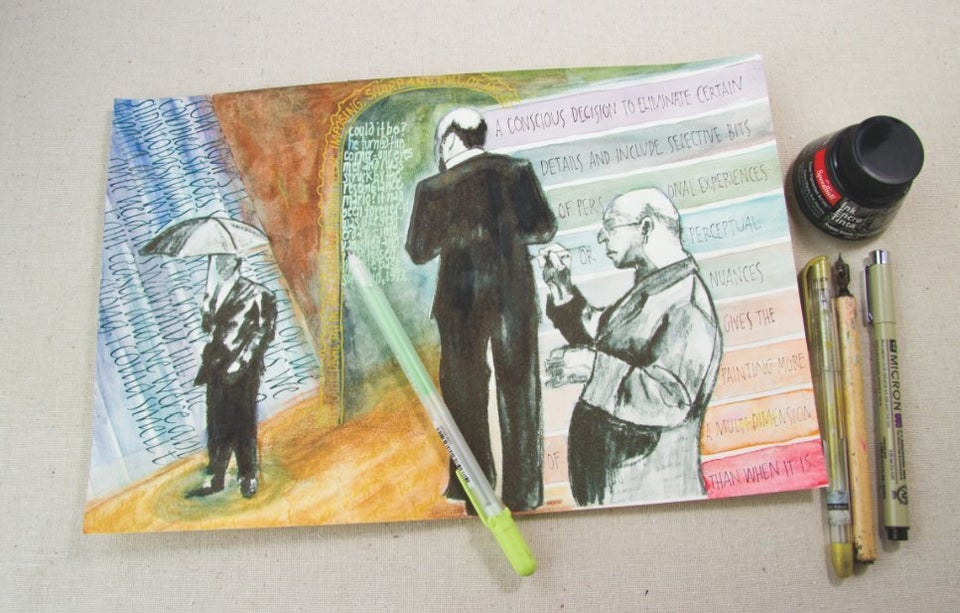Some people keep journals to keep track of thoughts and memories, others keep running lists of things they want or need to do. If you're like us, you do a bit of both. And if that's the case, the Bullet Journal just might be for you.
Developed by digital product designer Ryder Carroll, the Bullet Journal is a process of logging and tracking your daily, monthly and future goals.
But by using a blank notebook, a pen and a ruler, you can create your own Bullet Journal, no app required. In the slideshow below, we list the five major components of keeping and using a Bullet Journal.
Step one: Create an index page at the beginning of the book. You will be numbering all of your pages going forward, so use this page to help you keep track of thoughts and ideas so you can quickly find them at any point.
List topics and collections on this page, followed by the page number on which you'll find them mentioned on in your journal. If you refer to the topic on multiple pages, break up the page numbers with commas.
It's a good idea to leave at least two pages for the index.
Step two: Plan for the future. The second section of your journal should be a "Future Log."
Create this section by dividing your page into three chunks. Each chunk will represent an upcoming month or even a year.
Think of this section as your "someday" list.
Step three: Task out your month. This third section is essentially your agenda or calendar, but you are only writing down tasks that need to be addressed on those days.
At the top of a blank page, write the month. In the left hand margin, write the number of days in the month, followed by the first letter of the day of the week it falls on (eg. 14 T). Don't forget to add these page numbers to your index page for tracking.
The page across from the calendar page should be a task page. This is where you list the things that need to be done at some point this month.
Once you have completed the tasks, you can strike them from the task page. If you did not complete the task this month, migrate them to next month's list.
Step four: Keep a daily log. This fourth section of your journal is the spot to log memories and and daily to-dos.
Unlike the monthly log, you can list multiple items under each date, but you'll still want to stick to top-line ideas like "research flights" or "finalize presentation."
This section is also great for recalling things you felt or learned throughout the day. To differentiate these items, use a bullet point for tasks, a circle to represent events and a dash to identify notes. For important tasks place an asterix next to the bullet point.
Unlike the monthly and future sections, you will not want to divide your page into sections or dedicate a full page to your daily log. This will allow you the flexibility to add as many daily notes as you'd like.
Step five: Migrate. This next step in Bullet Journaling will not only help you feel more organized, it will also hold you accountable.
Beside each task you put in your journal, use a bullet point. Once a month, completely review your entries and turn the bullets into X marks for items that are completed. Use > symbols for items that need to be moved to next month and < symbols for items that need to be added to your "Future" or "Someday" log.
The purpose of reviewing and re-writing items is to ensure you are only moving over things you really care about. This also helps you get a better understanding of yourself.
Step six: Create collections. As you journal day-by-day or month-by-month, you might notice recurring themes and ideas.
Keep track of these on separate pages by creating lists like books you want to read or places you want to visit.
Once you have started a new list, add the page number to your index page so you can reference it later.
So who should use a Bullet Journal?
Well, anyone who already keeps an agenda, for starters, and anyone who loves organizing their thoughts and referencing them later on.
But if to-do lists make you anxious, this method of journaling might not be for you. Writer and lawyer Reva Seth, writing in Fast Times, suggests instead of creating overwhelming lists, try tracking success with "got done" lists to boost creativity, happiness and productivity.
Creative writers might not enjoy the Bullet Journal method either. While you can still doodle and detail creative thoughts in the book, one of the main focuses is to narrow in on ideas and keep lists short and to the point.
Regardless of how you choose to keep a journal, experts at the University of Rochester Medical Center say doing so can not only help you deal with your emotions, it can also be used as a tool to improve your mental health.
Do you keep a journal? Let us know in the comments below.
Also on HuffPost
